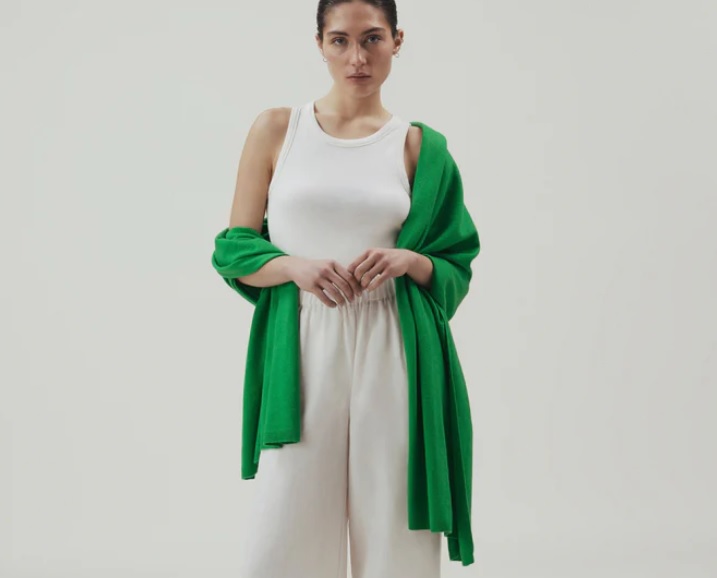The Timeless Elegance of Cashmere Clothing: An In-depth Guide

Cashmere, renowned for its softness, warmth, and luxurious feel, has long been a symbol of sophistication in the fashion world. Derived from the undercoat of cashmere goats, this exquisite material offers unmatched comfort and elegance, making it a coveted choice for high-quality clothing. This detailed guide explores the world of cashmere clothing, from its origins and production processes to its care and styling tips, helping you understand why it remains a staple in the wardrobes of the fashion-conscious.
The Origins of Cashmere
Cashmere wool originates from the soft undercoat or underlayer of the Kashmir goats, which are found in the Himalayan regions of Mongolia, Nepal, and China, among other areas. The fibers are incredibly fine and soft, yet provide exceptional warmth, which was essential for survival in the harsh climates where these goats evolved. Historically, cashmere was a luxury item in regions like Kashmir and Persia, where it was used to make shawls and other garments for royalty and the elite.
How Cashmere is Produced?
The production of cashmere is a labor-intensive process that begins with the annual molting of the goats, where they shed their winter coat. Herders collect the shed wool by combing rather than shearing, as the latter can damage the fine cashmere fibers. Once collected, the raw cashmere is cleaned and sorted by quality, with the longest and finest fibers being the most prized. These fibers are then spun into yarn and woven or knitted into fabrics that are used to create various garments.
Characteristics of High-Quality Cashmere
Not all cashmere is created equal. The quality of cashmere clothing depends on several factors, including the fiber length, diameter, color, and purity. High-quality cashmere typically has longer fibers, resulting in smoother and more durable yarns that are less prone to pilling. Additionally, the finest cashmere has a diameter of less than 19 microns, making it extremely soft to the touch.
The Benefits of Wearing Cashmere
Cashmere clothing – the epitome of luxury and practicality in the world of fashion. With its unbeatable combination of warmth and lightweight design, it becomes the adventurer’s ultimate companion in the battle against the elements. Imagine yourself braving the icy winds of snow-capped mountains or exploring the lush jungles under the scorching sun, all while wrapped in the divine comfort of cashmere layers. This remarkable fabric not only provides excellent insulation but is also blessed with the ability to keep moisture at bay, ensuring you stay dry and comfortable in any climate. And fear not, for even the most sensitive skin shall find solace in cashmere’s hypoallergenic embrace. Embrace the journey, embrace the cashmere!
Caring for Cashmere Clothing
To maintain the quality and longevity of cashmere clothing, proper care is essential:
- Washing: Hand wash cashmere items in cold water using a mild detergent. Avoid the washing machine, as the agitation can cause the fibers to felt and shrink.
- Drying: Gently press out any excess water and lay the garment flat on a towel to dry. Avoid hanging cashmere, as it can distort the shape of the garment.
- Storing: Store cashmere garments folded in a drawer or on a shelf. If you must hang them, use a padded hanger to prevent stretching. Moth-proofing is also recommended, as cashmere can attract moths.
Styling Tips for Cashmere Clothing
Cashmere’s versatility makes it easy to incorporate into any wardrobe, whether for casual outings or more formal events. Here are some styling tips:
- Casual Elegance: Pair a cashmere sweater with jeans and sneakers for a look that’s both chic and comfortable.
- Business Casual: Layer a cashmere cardigan over a button-down shirt and trousers for a professional yet relaxed outfit.
- Evening Out: Combine a cashmere wrap or shawl with an elegant dress for added warmth and style on cooler evenings.
The Environmental Impact of Cashmere
While cashmere is a natural fiber, its production has significant environmental impacts, primarily due to the overgrazing of goats in areas not meant to support large herds. This has led to desertification in some regions. Consumers interested in sustainable fashion should look for brands that source cashmere responsibly or invest in recycled cashmere products.
The Future of Cashmere
Innovations in textile technology and a growing awareness of sustainable practices are leading to new developments in cashmere production. Brands are now exploring eco-friendly dyes and processes, as well as ways to recycle cashmere to reduce environmental impact. The luxury market is also seeing a rise in demand for traceable and ethically produced cashmere, reflecting a broader trend towards transparency in the fashion industry.
Conclusion: Embracing the Luxe Appeal of Cashmere
Cashmere clothing represents the pinnacle of luxury and comfort in fashion. Its softness, warmth, and timeless appeal make it an enduring favorite among those who appreciate quality and elegance. By understanding the nuances of cashmere, from its production to its care, fashion enthusiasts can make informed choices that not only elevate their style but also contribute to more sustainable consumption patterns. Cashmere is more than just clothing; it’s an investment in beauty, comfort, and ethical fashion practices.

